Abstract
Frequency of dividing cells is suggested to be an indirect measure of the mean growth rate of an aquatic bacterial community. Seasonal changes in frequency of dividing cells were found which covariated with the bacterial uptake of 14C-labeled phytoplankton exudates. Batch and continuous culture growth experiments, using brackish water bacteria in pure and mixed enrichment cultures, were performed to establish a relationship between frequency of dividing cells and growth rate. An improved technique for bacterial direct counts, using fluorescent staining and epifluorescence microscopy, is presented. Based on a 6-month survey in a coastal area of the Baltic Sea, the bacterial production in the photic zone is estimated. Compared to the total primary production in the area, the bacterial population during this period utilized approximately 25% of the amount of carbon originally fixed by the primary producers.
Full text
PDF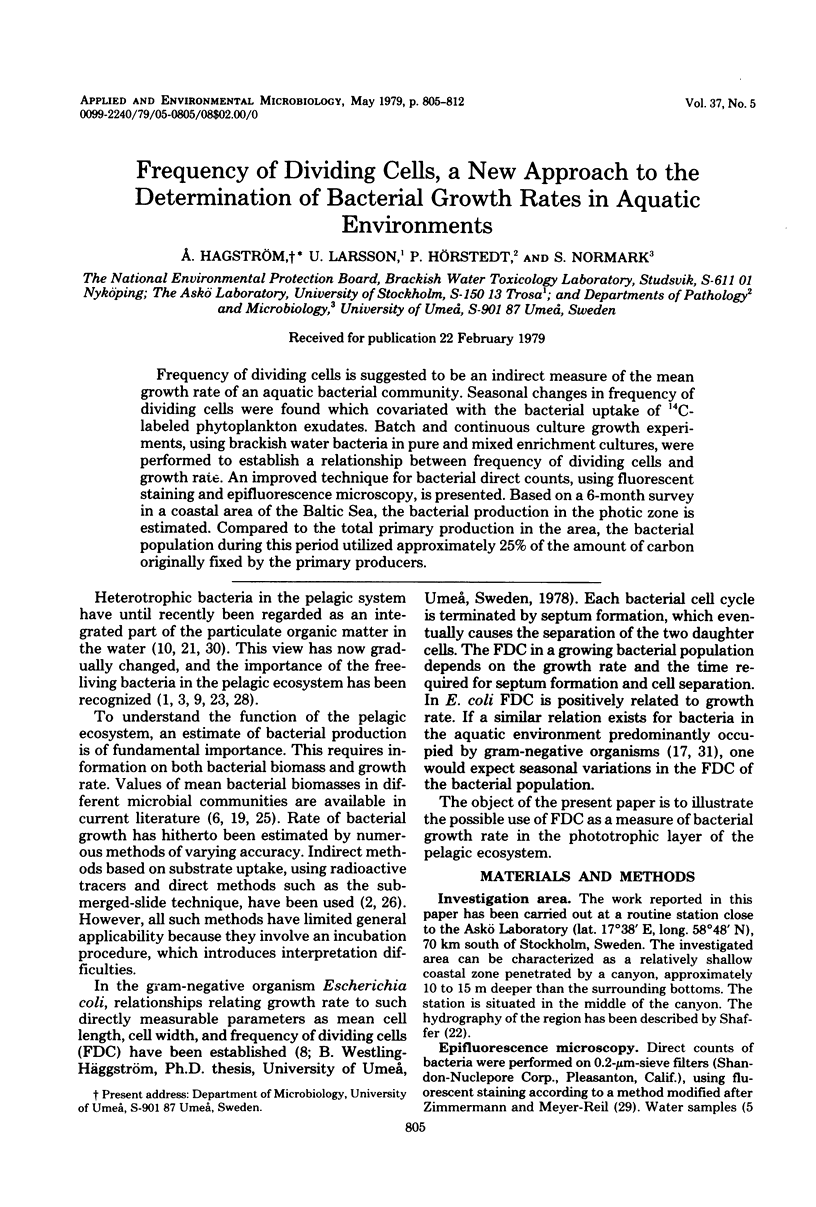
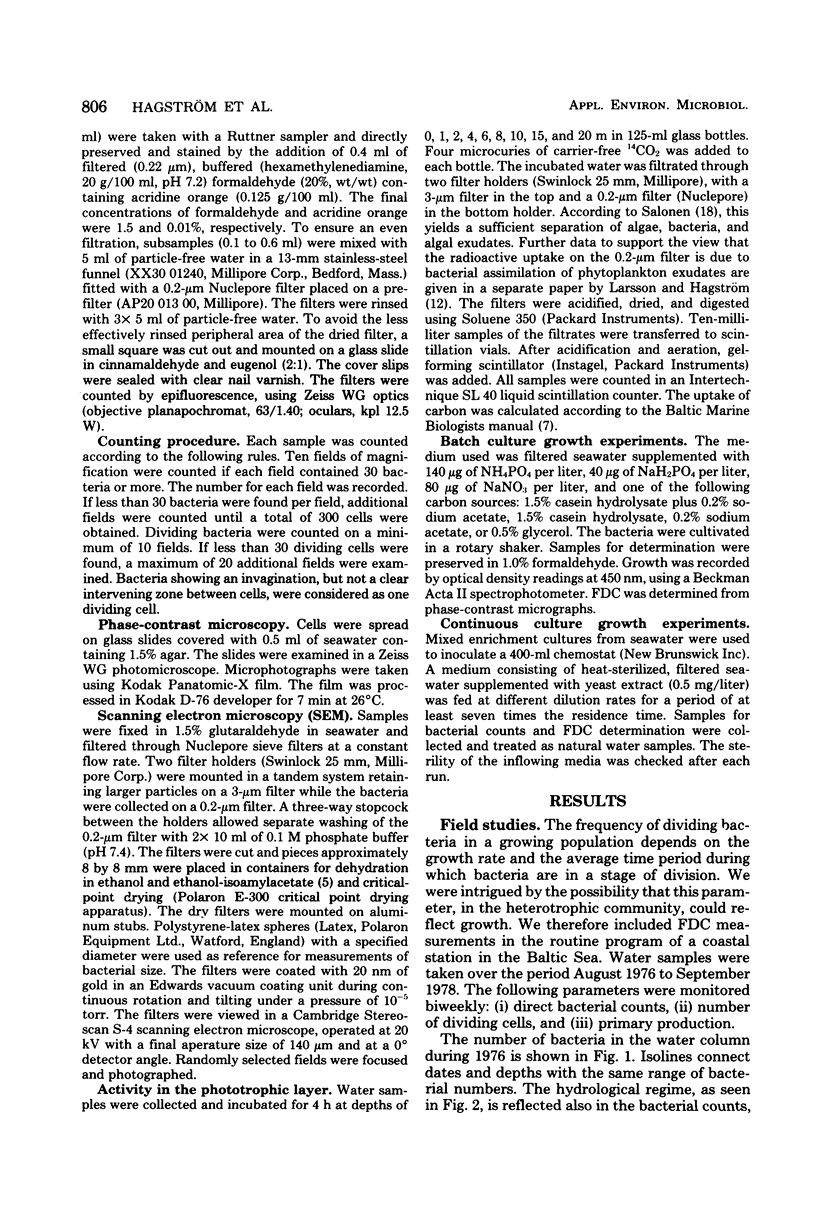
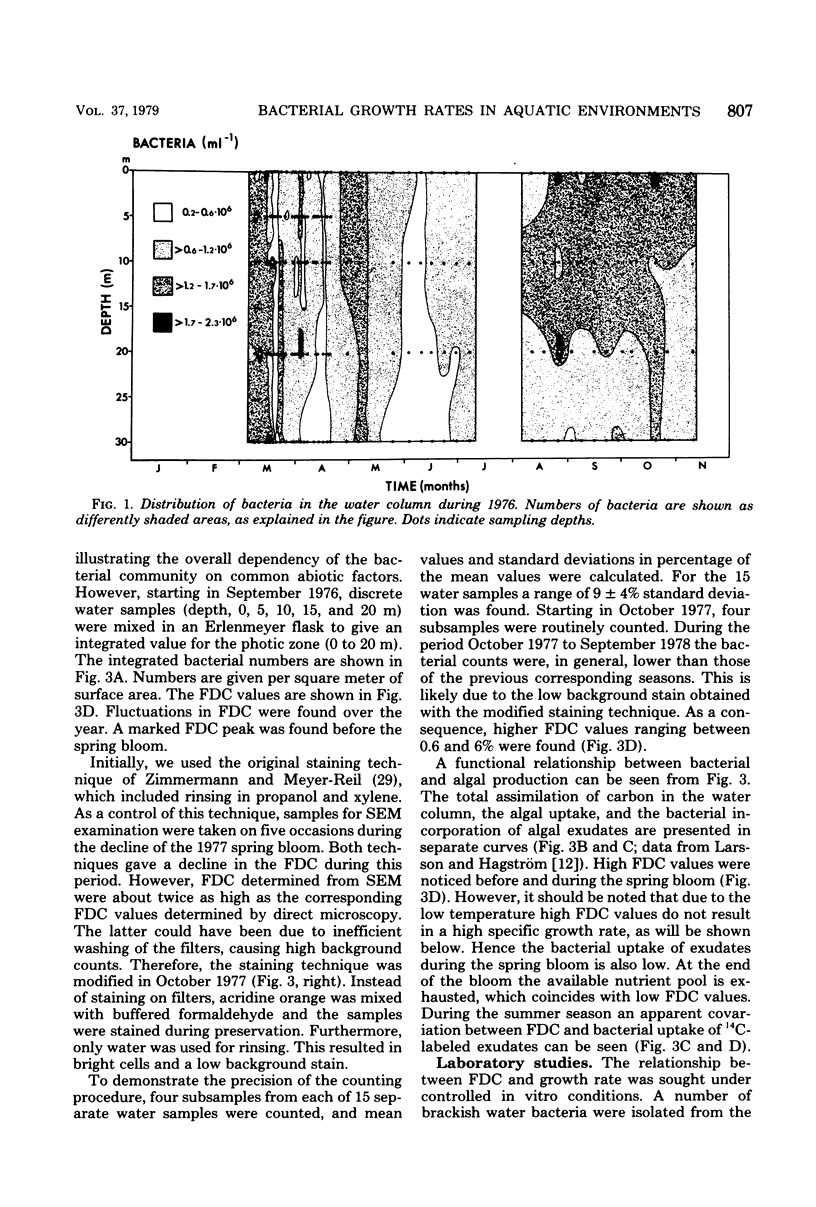
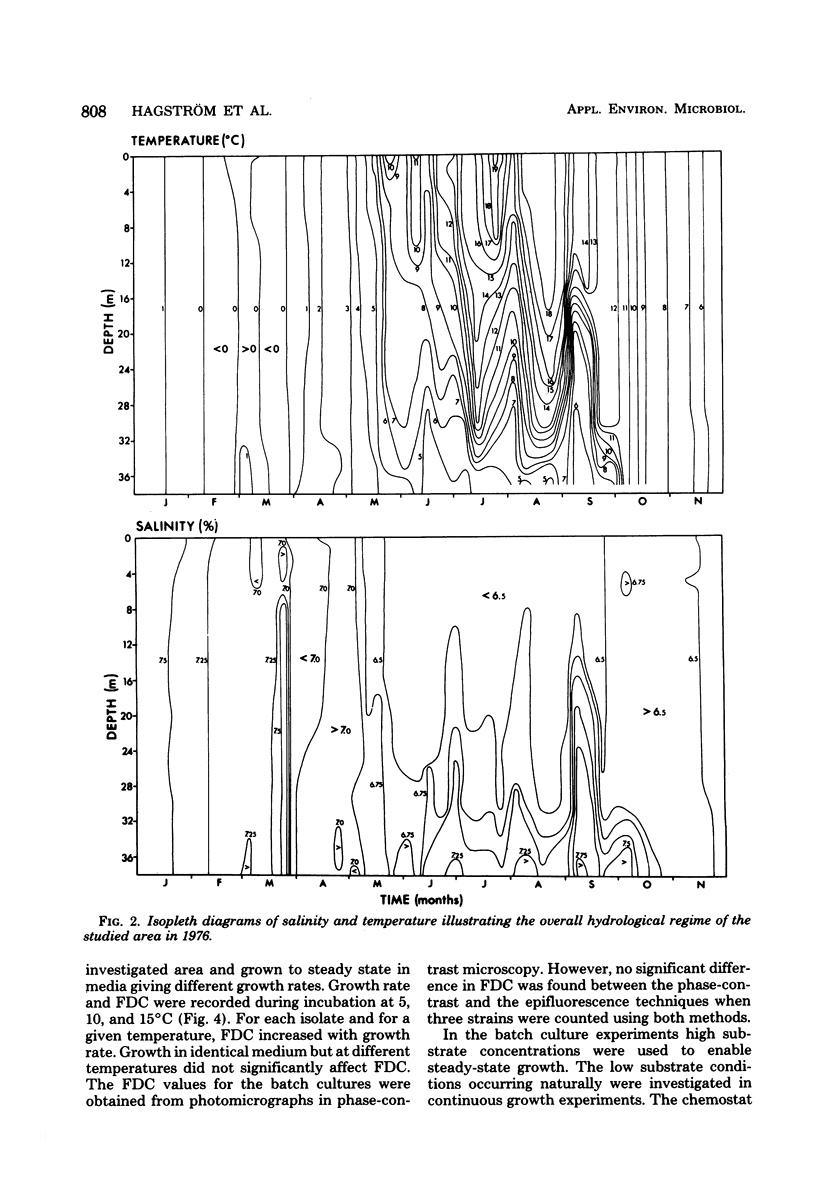
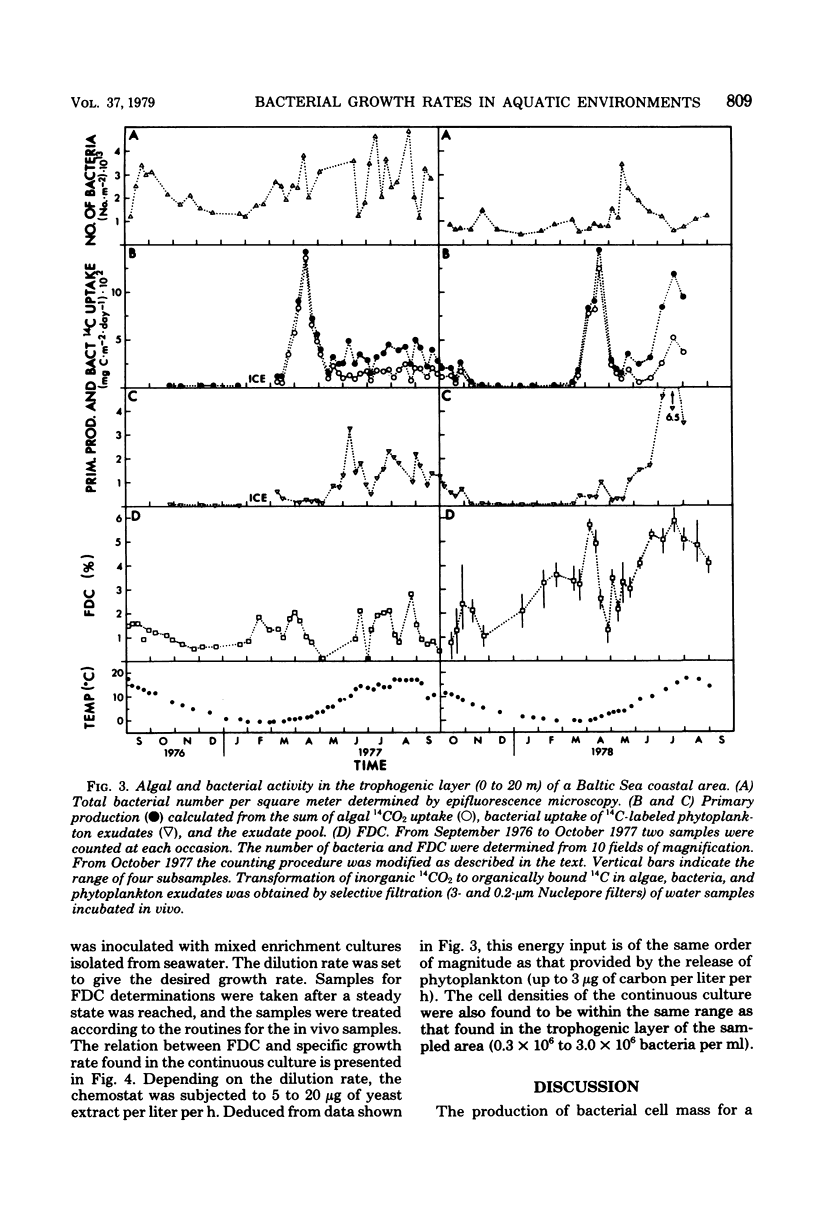
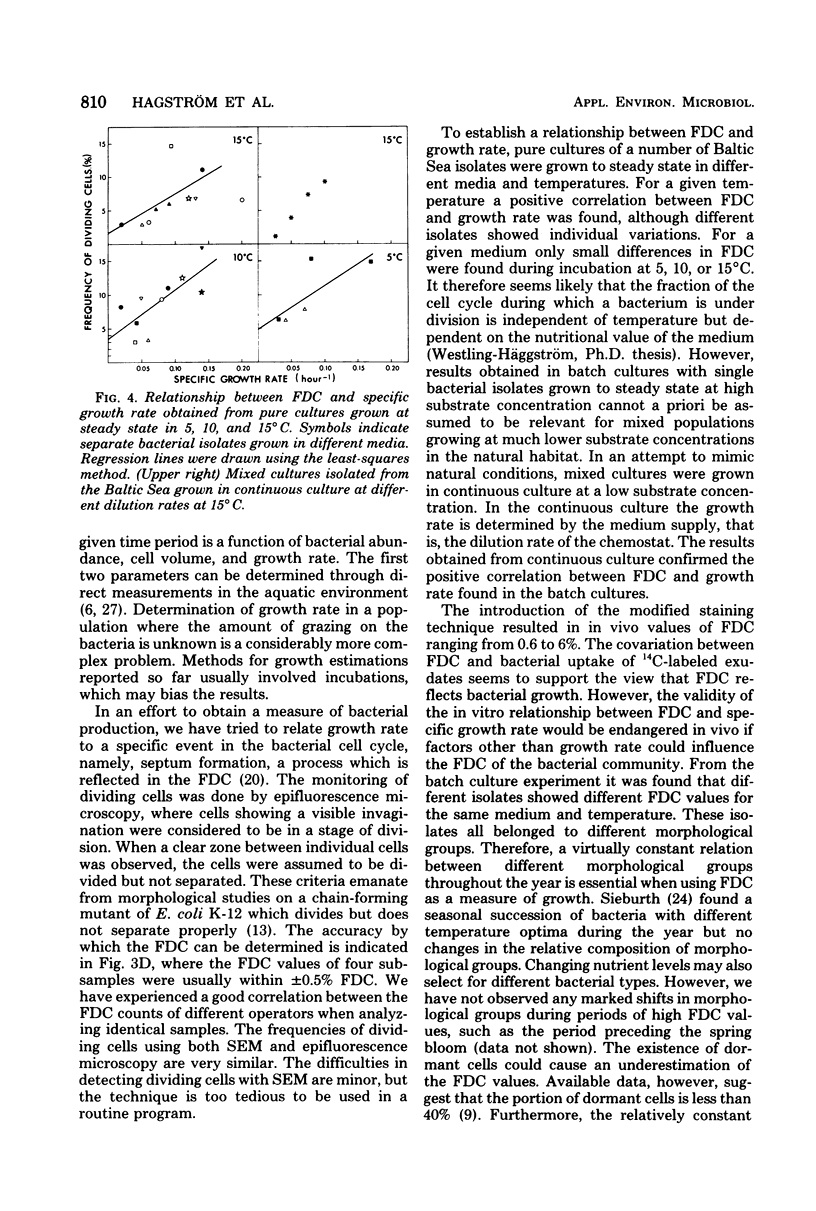
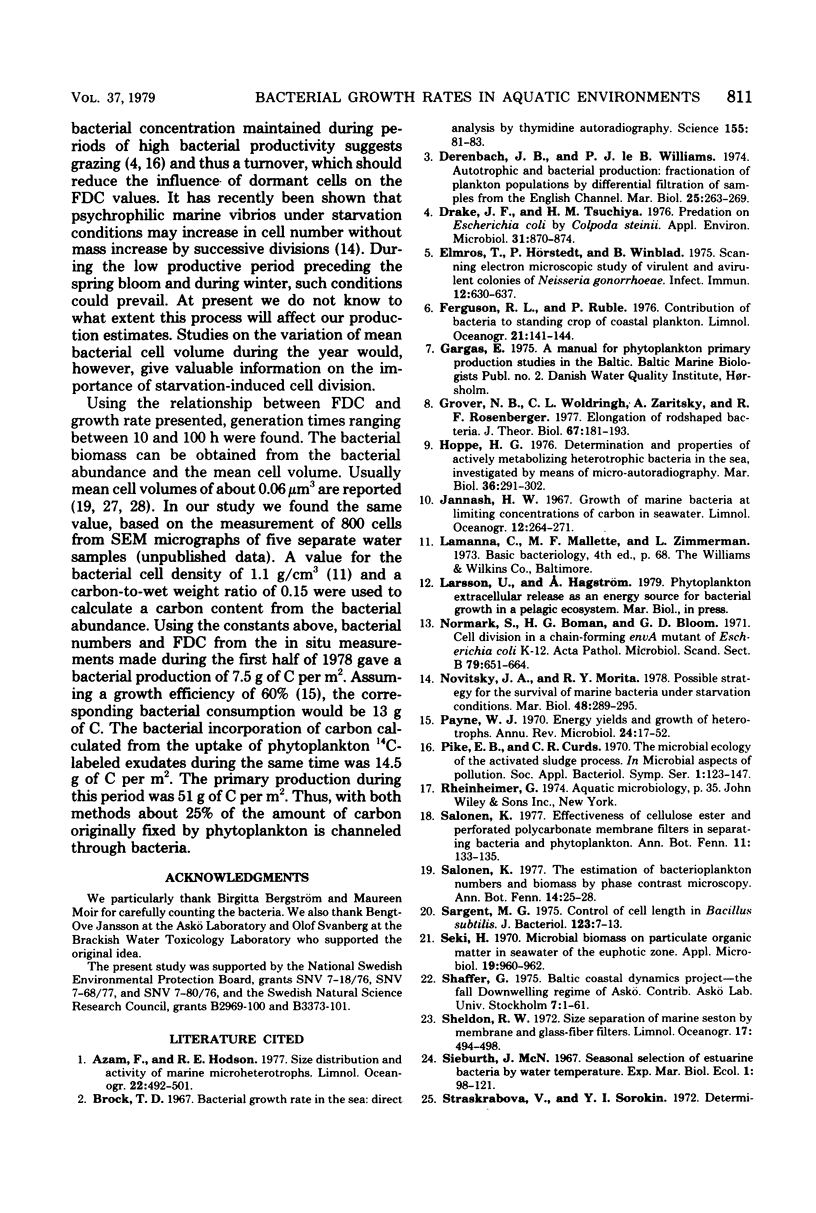
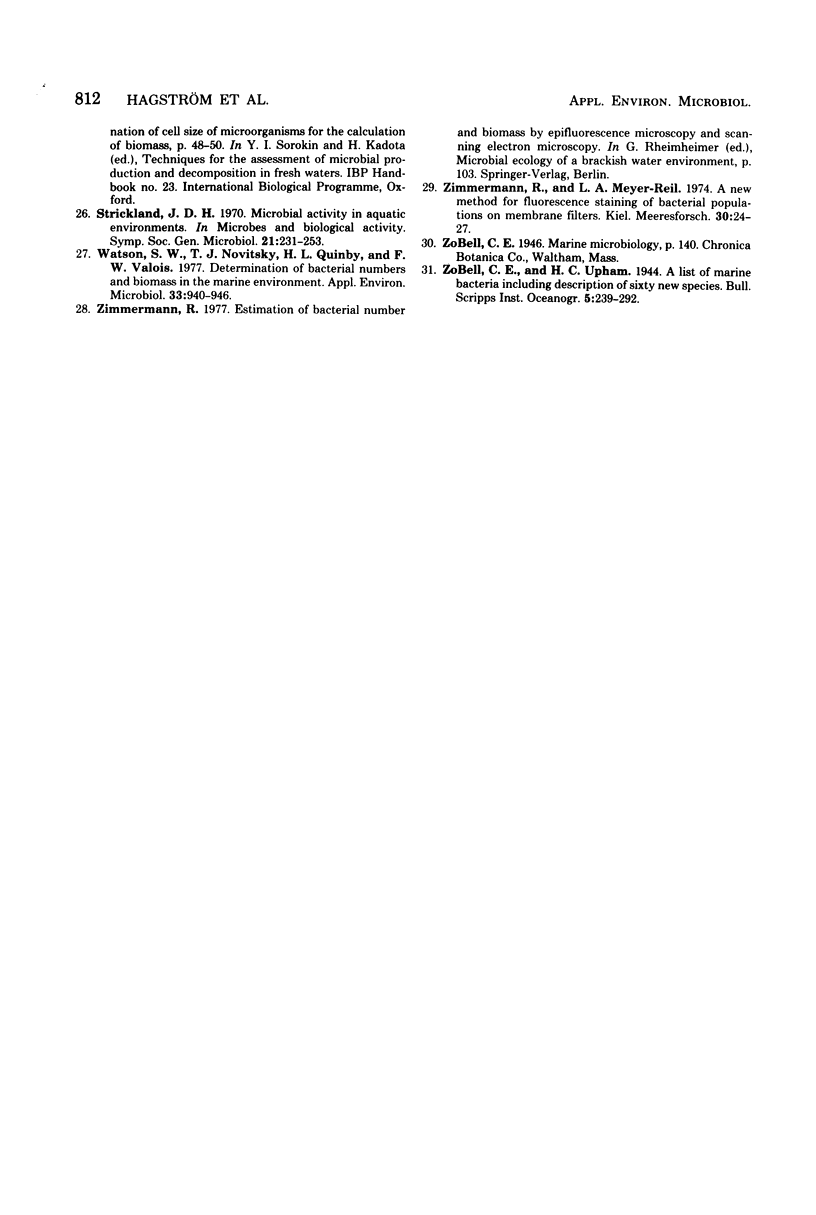
Selected References
These references are in PubMed. This may not be the complete list of references from this article.
- Brock T. D. Bacterial growth rate in the sea: direct analysis by thymidine autoradiography. Science. 1967 Jan 6;155(3758):81–83. doi: 10.1126/science.155.3758.81. [DOI] [PubMed] [Google Scholar]
- Drake J. F., Tsuchiya H. M. Predation of Escherichia coli by Colpoda steinii. Appl Environ Microbiol. 1976 Jun;31(6):870–874. doi: 10.1128/aem.31.6.870-874.1976. [DOI] [PMC free article] [PubMed] [Google Scholar]
- Elmros T., Hörstedt P., Winblad B. Scanning electron microscopic study of virulent and avirulent colonies of Neisseria gonorrhoeae. Infect Immun. 1975 Sep;12(3):630–637. doi: 10.1128/iai.12.3.630-637.1975. [DOI] [PMC free article] [PubMed] [Google Scholar]
- Grover N. B., Woldringh C. L., Zaritsky A., Rosenberger R. F. Elongation of rod-shaped bacteria. J Theor Biol. 1977 Jul 21;67(2):181–193. doi: 10.1016/0022-5193(77)90192-8. [DOI] [PubMed] [Google Scholar]
- Normark S., Boman H. G., Bloom G. D. Cell division in a chain-forming envA mutant of Escherichia coli K12. Fine structure of division sites and effects of EDTA, lysozyme and ampicillin. Acta Pathol Microbiol Scand B Microbiol Immunol. 1971;79(5):651–664. doi: 10.1111/j.1699-0463.1971.tb00093.x. [DOI] [PubMed] [Google Scholar]
- Payne W. J. Energy yields and growth of heterotrophs. Annu Rev Microbiol. 1970;24:17–52. doi: 10.1146/annurev.mi.24.100170.000313. [DOI] [PubMed] [Google Scholar]
- Pike E. B., Curds C. R. The microbial ecology of the activated sludge process. Soc Appl Bacteriol Symp Ser. 1971;1:123–147. doi: 10.1016/b978-0-12-648050-4.50012-2. [DOI] [PubMed] [Google Scholar]
- Sargent M. G. Control of cell length in Bacillus subtilis. J Bacteriol. 1975 Jul;123(1):7–19. doi: 10.1128/jb.123.1.7-19.1975. [DOI] [PMC free article] [PubMed] [Google Scholar]
- Seki H. Microbial biomass on particulate organic matter in seawater of the euphotic zone. Appl Microbiol. 1970 Jun;19(6):960–962. doi: 10.1128/am.19.6.960-962.1970. [DOI] [PMC free article] [PubMed] [Google Scholar]
- Watson S. W., Novitsky T. J., Quinby H. L., Valois F. W. Determination of bacterial number and biomass in the marine environment. Appl Environ Microbiol. 1977 Apr;33(4):940–946. doi: 10.1128/aem.33.4.940-946.1977. [DOI] [PMC free article] [PubMed] [Google Scholar]


